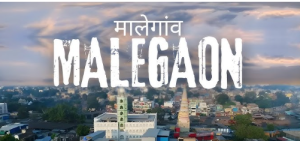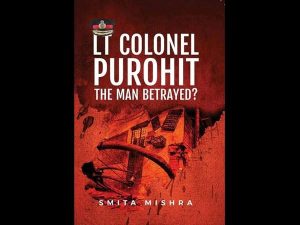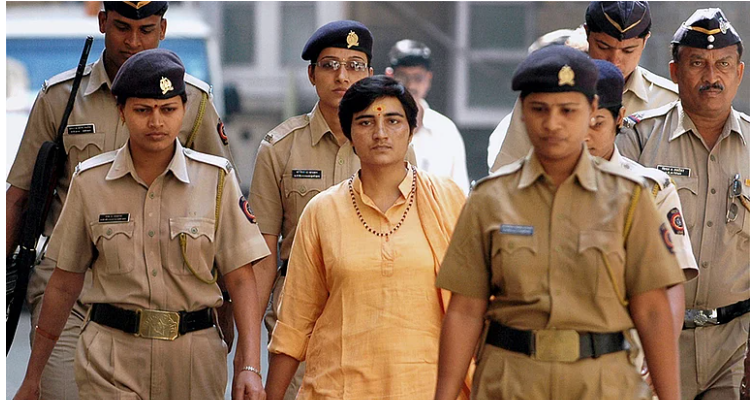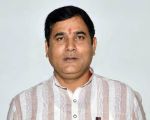Delhi : The Malegaon bomb blast of September 29, 2008, marked a pivotal moment in India’s counter-terrorism narrative, sparking debates over investigative integrity, media influence, and the politicization of terrorism. This article provides a comprehensive analysis of the incident, drawing from court proceedings, media reports, parliamentary statements, and official documents. It examines the initial investigation by the Maharashtra Anti-Terrorism Squad (ATS), the subsequent transfer to the National Investigation Agency (NIA), and the judicial outcomes, particularly focusing on the case of Sadhvi Pragya Singh Thakur and other accused. The article critically evaluates allegations of custodial misconduct, the propagation of the “Hindu terror” theory, and the broader socio-political context, offering researchers a detailed resource for understanding this complex case.
On September 29, 2008, at approximately 9:35 p.m., a bomb explosion rocked Malegaon, a textile town in Maharashtra, India, near Anjuman Chowk. The blast, initially attributed to a cylinder explosion by the Maharashtra Police, killed six people and injured dozens. What began as a routine investigation into a terrorist attack evolved into a contentious case, implicating individuals associated with Hindu nationalist groups and igniting debates over investigative bias, media narratives, and judicial fairness. The case, initially handled by the Maharashtra ATS under Hemant Karkare, was later transferred to the NIA, leading to significant shifts in the prosecution’s approach. This article synthesizes primary sources, including court records, media reports, and parliamentary discussions, to provide a rigorous examination of the Malegaon blast case, its implications, and its enduring controversies.
The Incident and Initial Response
The explosion occurred opposite Shakti Goods Transport Company, between Anjuman Chowk and Bhiku Chowk, during the holy month of Ramadan, amplifying communal sensitivities. Early reports suggested a gas cylinder explosion, but forensic evidence later confirmed the use of RDX, a high-grade explosive. The Maharashtra Police, led by ATS chief Hemant Karkare, registered a case against unknown persons under the Indian Penal Code and the Explosives Act. The blast site saw immediate unrest, with reports of stone-pelting injuring civilians and police personnel, raising suspicions of orchestrated violence.
High-profile visits by state officials, including Deputy Chief Minister R.R. Patil and MLA Baba Ziauddin Siddiqui, underscored the incident’s political significance. The absence of initial suspects prompted the ATS to explore connections with Hindu nationalist organizations, a departure from the typical focus on Islamist terrorism prevalent in India at the time. This shift set the stage for the controversial “Hindu terror” narrative that dominated media discourse.
The Investigation: ATS and Key Arrests
The ATS investigation gained momentum in October 2008 when a two-wheeler (LML Freedom, registration GJ-5-JR-1920) linked to the blast was traced to Sadhvi Pragya Singh Thakur, a former resident of Bhind, Madhya Pradesh, who had become a spiritual leader. On October 7, ATS officer P.I. Sawant contacted Pragya, learning that she had sold the vehicle in 2004 to Sunil Joshi for Rs. 24,000. Unsatisfied with her explanation, Sawant summoned her to Surat, where she was detained on October 10, 2008, and taken to Mumbai.
Pragya’s arrest on October 23, alongside Shyamlal Sahu and Shivnarayan Singh, marked a turning point. The ATS alleged that the motorcycle, despite tampered engine and chassis numbers, was used in the blast. However, discrepancies emerged: the vehicle was registered in Surat under another individual’s name, and Pragya claimed it was stolen after its sale. The ATS also invoked the Maharashtra Control of Organised Crime Act (MCOCA) on November 20, 2008, escalating the case’s severity.
Subsequent arrests included Lieutenant Colonel Prasad Srikant Purohit, accused of supplying RDX from military stocks, and others like Sameer Kulkarni, Ramesh Upadhyaya, and Sudhakar Chaturvedi, linked to the Hindu nationalist group Abhinav Bharat. The ATS relied on forensic reports, narco-analysis tests, and witness statements, though many tests yielded negative results, and witnesses later retracted their statements, alleging coercion.
Allegations of Custodial Misconduct
Pragya Singh Thakur’s treatment during custody became a focal point of controversy. She alleged physical and psychological torture by ATS officials, including being beaten, threatened, and forced to listen to obscene content. On November 25, 2008, she reported these abuses to the MCOCA court, prompting the National Human Rights Commission (NHRC) to seek a report from the Maharashtra government. The NHRC notice highlighted concerns over human rights violations, but no conclusive action followed.
Court records corroborate Pragya’s claims of being detained illegally from October 10 to October 24, 2008, without formal arrest. She was housed at Hotel Rajdoot in Mumbai, allegedly under ATS surveillance, and instructed to contact associates to affirm her well-being. Her health deteriorated, leading to hospitalization for abdominal and kidney pain. These allegations raised questions about the ATS’s investigative methods and their compliance with legal and ethical standards.
Judicial Proceedings
The Malegaon case underwent extensive judicial scrutiny, with multiple bail applications and challenges in the Bombay High Court and Supreme Court. Key developments include:
Bombay High Court (March 5, 2010): Pragya’s bail application under MCOCA and CrPC Section 167(2) was rejected, citing prima facie evidence linking her to the blast. The court noted the motorcycle’s connection but did not address her custodial torture claims in depth.
Bombay High Court (July 19, 2010): Several accused, including Pragya and Purohit, were discharged from MCOCA charges, weakening the ATS’s organized crime narrative.
Supreme Court (September 23, 2011): Pragya challenged the Bombay High Court’s March 2010 bail rejection, arguing violations of Article 22 and CrPC Section 167(2). The appeal was dismissed, affirming the lower court’s findings.
NIA Investigation (April 1, 2011): The Union Home Ministry transferred the case to the NIA, bypassing Maharashtra’s consent. The NIA’s supplementary report (May 13, 2016) dropped MCOCA charges and concluded insufficient evidence against Pragya, citing retracted witness statements and doubts over the motorcycle’s ownership.
Bombay High Court (April 25, 2017): Pragya was granted bail, with the court observing that the motorcycle’s link to her was doubtful, and her presence at a Bhopal meeting with others did not constitute conspiracy. The court also considered her medical condition, including breast cancer, and prolonged detention since 2008.
These rulings highlight the case’s complexities, with the judiciary balancing prosecution evidence, witness credibility, and human rights concerns.
The “Hindu Terror” Narrative
Media coverage from September to December 2008 played a significant role in shaping public perception. Headlines like “Malegaon blast arrest exposes Hindu militancy” (Indian Express, October 30, 2008) popularized the term “Hindu terror,” implicating Hindu nationalist groups like Abhinav Bharat and Sanatan Sanstha. Muslim intellectuals and political leaders, such as Prof. Anwar Amir Ansari, endorsed this narrative, suggesting deeper involvement of Hindu right-wing organizations.
Left-leaning parties, including the CPI(M), and Congress MPs like Rashid Alvi amplified these claims in Parliament. Brinda Karat’s demand for banning Hindu outfits and Hannan Mollah’s letter to the Prime Minister alleging arms training by Hindu groups fueled the discourse. However, parliamentary voices like Prof. K.M. Kader Mohideen (DMK) cautioned against labeling suspects as “Hindu terrorists,” advocating a religion-neutral approach to terrorism.
The narrative faced scrutiny for its inconsistencies. The ATS’s claims against Purohit, particularly regarding RDX procurement, were debunked by the Indian Army, which clarified that it does not use or store RDX, and that intelligence officers like Purohit lack access to such quantities. The absence of concrete evidence linking RSS to the accused organizations further undermined the narrative’s credibility.
Hemant Karkare’s Role and Death
Hemant Karkare, the ATS chief, was central to the investigation. His initial attribution of the blast to a cylinder explosion and subsequent focus on Hindu suspects drew criticism for inconsistency. Prime Minister Manmohan Singh’s meeting with L.K. Advani, followed by discussions with National Security Advisor M.K. Narayanan and IB chief P.C. Haldar, suggests political pressure on the investigation (India Today, November 21, 2008).

Karkare’s death on November 26, 2008, during the Mumbai terror attacks, added a layer of intrigue. Home Minister P. Chidambaram’s parliamentary statement (December 23, 2008) detailed the sequence of events, relying on eyewitness accounts from Arun Jadhav, Maruti Phad, and terrorist Mohammed Ajmal Amir. The statement refuted conspiracy theories about Karkare’s death, emphasizing his bravery and the tragic circumstances of the attack. However, questions about the ATS’s investigative rigor persisted, with critics alleging political motivations behind the Hindu terror focus.
Propaganda and Media Bias
Certain media reports propagated unverified claims, such as linking the accused organizations to the RSS without evidence from courts or the ATS. Articles highlighting Karkare’s Brahmin caste or suggesting that a change in Maharashtra’s government altered the case’s trajectory were criticized for communalizing the narrative. These reports ignored judicial findings, such as the NIA’s exoneration of Pragya and the retraction of witness statements, perpetuating a biased portrayal of the case.
Contextual Analysis: Terrorism in India (2004–2008)
The Malegaon blast was one of several terrorist attacks in India during this period, including the Mumbai 26/11 attacks, Ahmedabad blasts (July 2008), and Samjhauta Express bombing (February 2007). The UPA government handed over 76 blast cases to the NIA, reflecting the era’s heightened security challenges (Rajya Sabha Q&A). The Malegaon case’s focus on Hindu suspects contrasted with the predominant Islamist terrorism narrative, raising questions about investigative impartiality and political influences.

Conclusions and Implications
The Malegaon blast case exemplifies the challenges of investigating terrorism in a politically charged environment. The ATS’s initial probe, marred by allegations of custodial torture and weak evidence, contrasts with the NIA’s more restrained findings. Judicial rulings, particularly the 2017 bail grant to Pragya, underscore the importance of evidence over narrative-driven prosecution. The “Hindu terror” theory, while politically expedient, lacked substantiation, highlighting the risks of media and political overreach.For researchers, this case offers insights into:
Investigative Integrity: The ATS’s reliance on retracted statements and narco-tests raises ethical questions about counter-terrorism methods.
Judicial Oversight: The judiciary’s role in correcting investigative excesses, as seen in Pragya’s bail, reinforces the rule of law.
Media Influence: The propagation of unverified narratives underscores the need for responsible journalism in sensitive cases.
Politicization of Terrorism: The case illustrates how political agendas can shape terrorism discourse, undermining national unity.
References
Bombay High Court Judgments (March 5, 2010; July 19, 2010; April 25, 2017).
Supreme Court of India Judgment (September 23, 2011).
Indian Express, India Today, News18 (September–December 2008).
Lok Sabha and Rajya Sabha Debates (October–December 2008).
NIA Supplementary Report (May 13, 2016).
NHRC Notice (November 25, 2008).





